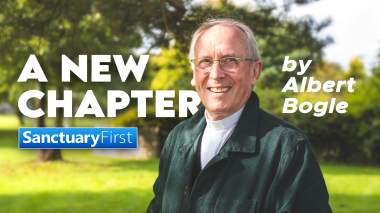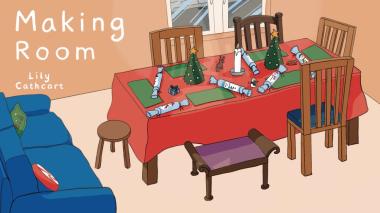Remembering Songs of Remembrance

People sing for many different reasons. They sing out of happiness and frustration, desperation and boredom, celebration and loneliness. They sing in order to be heard and they sing so that they don’t have to hear. They sing in stadiums, karaoke bars, in the shower or down in the street looking up to the balcony where hopefully a loved one will hear. They sing because they’ve been forced to. (stand up straight you in the back!) and they sing because they can’t help it.
We sing awkwardly and triumphantly. Sometimes we belt out every word and sometimes we mumble the two words in the chorus that are stuck in our head. We sing when standing shoulder to shoulder and we sing with head in hands. We sing before we can speak and we’ll be singing long after our last words.
But there’s one thing that unites all our songs; each croon and warble, each hum and yodel, each hymn and chant.
Every time we sing, we remember.
From those nursery rhymes where we first learn to play with melody and language to the adrenaline pumped anthems of youth to the quiet elegies that stop us in our tracks and make us forget everything else, songs help us to remember. Musical notes are a sequence of memories that we order and re-order in new combinations. A musical note cannot be held in your hand - it is something that happens that must be remembered. When we recall a favourite song we are remembering it. But also, when we write a new song we are re-membering remembered fragments of sound in new ways.
 Songs can be designed to teach us, inspire us and challenge us, but every song has meanings personal to the one who hears it, where the memories of the sounds get entwined with the time and place of hearing it. As we remember songs, they remember us, helping to put forgotten parts of our life together.
Songs can be designed to teach us, inspire us and challenge us, but every song has meanings personal to the one who hears it, where the memories of the sounds get entwined with the time and place of hearing it. As we remember songs, they remember us, helping to put forgotten parts of our life together.
This November it has been a pleasure and a privilege for Sanctuary First to host a selection of Songs of Remembrance as part of our daily worship (30th Oct to 30th Nov if you want to check out the archive). Our contributors have shared favourite songs and given glimpses of memories that are bound up in them. It has been immensely rewarding seeing how the songs weave into Biblical readings and heartfelt prayers.
There has been a tremendous variety of music spanning 275 years! The oldest piece was written in 1741 and the latest, was released just earlier this year. The most popular decade however was the 1970s. Dig out your flares folks.
Our contributors also delivered on variety of genre, with the playlist featuring pop, rock, folk, R&B, classical, indie, soul, reggae, country and jazz! These pieces included songs from soundtracks, smash hit singles, obscure album tracks, covers, protest songs, choral singing and orchestral movements.
Interestingly, considering the amount of fantastic pop songs included, there were not very many ‘conventional love songs’. There were some brilliant love odes but there were also songs of political struggle, social commentary and wrestling with personal identity, hope and longing. Thanks to all our contributors who tackled sensitive issues with wisdom, care and insight. They have been a blessing to us.
Thanks also to all the people who read, liked, commented and shared the posts. There were over 45 comments through the website and Facebook with people offering encouragement, music trivia, memories and songs of their own. A key part of Sanctuary First is developing community and it has been wonderful to see so many people getting engaged and discussing faith, life and music.
Starting in December, along with our Advent Challenges, our daily worship will move from audio to visual as we ‘picture’ Christmas through a variety of images from high art to snapshots to doodles. Do you have a picture that relates in some way to Christmas or the Nativity? It could be a photo you took or a picture you painted? If so, it could feature in our upcoming Advent series! Make sure the image belongs to you and send us a message, we'd love to see them!
By James Cathcart




 Add to Favourites
Add to Favourites







Login to comment.